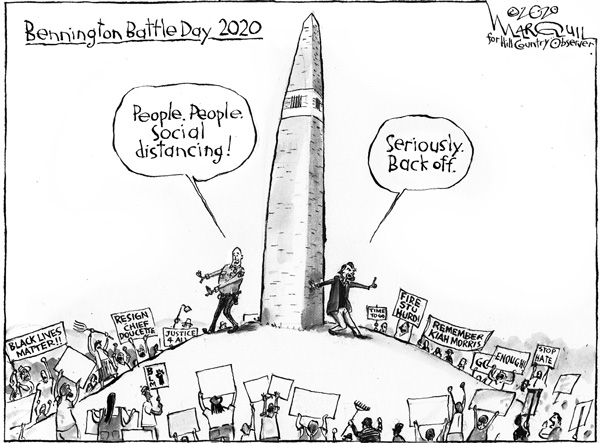Editorial July 2020
E D I T O R I A L
Sun Belt’s Covid surge raises questions here
The month of June has seen our region slowly venturing forward after so many weeks of coronavirus-related shutdowns.
Restaurants that had been limited to selling takeout meals since March have begun to offer outdoor table service – and in Massachusetts and Vermont, limited indoor seating. Museums and galleries are preparing to reopen. Retail stores, hair salons and some offices are up and running again, albeit with limited occupancy.
In our corner of the Northeast, new cases of Covid-19 have slowed to a handful per day – a sign that all that physical distancing, mask wearing and hand washing is paying off. Vermont in particular has “flattened the curve” of new cases nearly to zero, and New York and Massachusetts both are on a downward slope after large outbreaks in their urban centers in the pandemic’s early stages.
But as June turns to July, we’re watching a huge surge in coronavirus cases across the South and West. Over the last week of June, states from the California to the Carolinas have repeatedly set daily records for new infections. Nationally, the number of new cases per day, having peaked at more than 30,000 in April and then fallen back toward 20,000 for many weeks, spiked past 40,000 for the first time and then to 50,000 on July 1.
The surge across the Sun Belt raises some pressing questions for our region. One is whether states that moved earlier and more aggressively to reopen their economies are showing us what our own future could be if we try to go too far in returning to normal. Another is whether, with Covid-19 surging so dramatically in nearly half the country, we’re really equipped to keep that new wave of infection from spreading to the Northeast.
No one wants to go back to stay-at-home mode. The pandemic has already taken a terrible toll on our economy, with lots of local businesses still operating at a fraction of their normal volume. And many of the events define summer in our region – music and theater festivals, county fairs, softball games, even Fourth of July parades – have been canceled, with resulting damage to our economy as well as our quality of life.
The virus is still out there, though, spreading efficiently when given the chance, and potentially deadly for some of us. An effective vaccine could take another year to develop, and perhaps much longer. Until then, containment remains the best option for saving lives -- and for limiting the economic damage.
Around the globe, the countries that have managed Covid-19 most effectively – including Taiwan, South Korea, New Zealand and Germany – have pushed their caseloads down to near zero through aggressive testing, contact tracing and isolation of infected patients. But incredibly, even five months into the pandemic, our own federal government still lacks any national testing strategy beyond the default of letting individual states figure it out. As a result, we have the highest number of infections and the highest death toll in the world.
U.S. testing capacity has improved significantly since the early weeks of pandemic, and by late June we were testing about 500,000 people per day. But some public health experts say we might need 5 million tests a day to bring our current outbreaks under control.
With their Covid-19 caseloads trending downward, Massachusetts, New York and Vermont all worked in recent weeks to ramp up their testing and tracing capacity as a strategy to control new outbreaks. We may soon find out whether those efforts have gone far enough.


